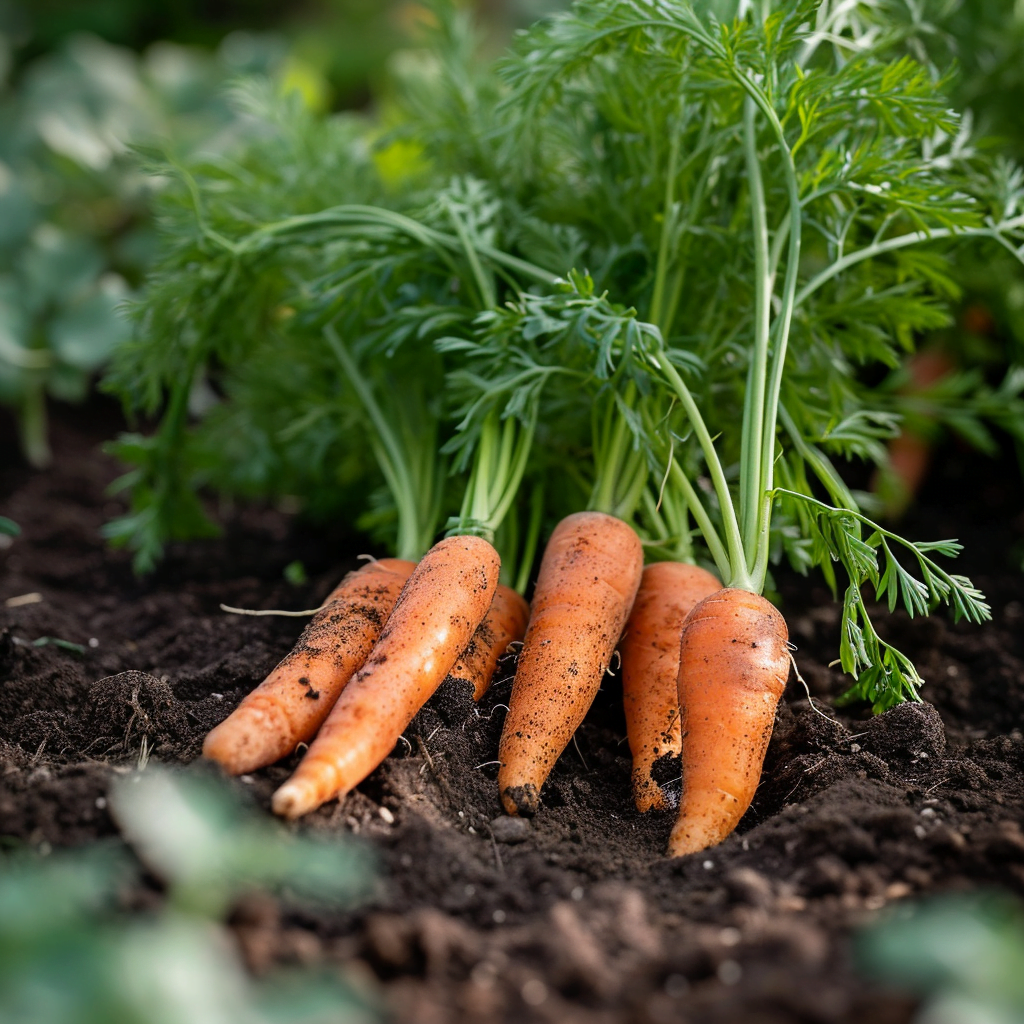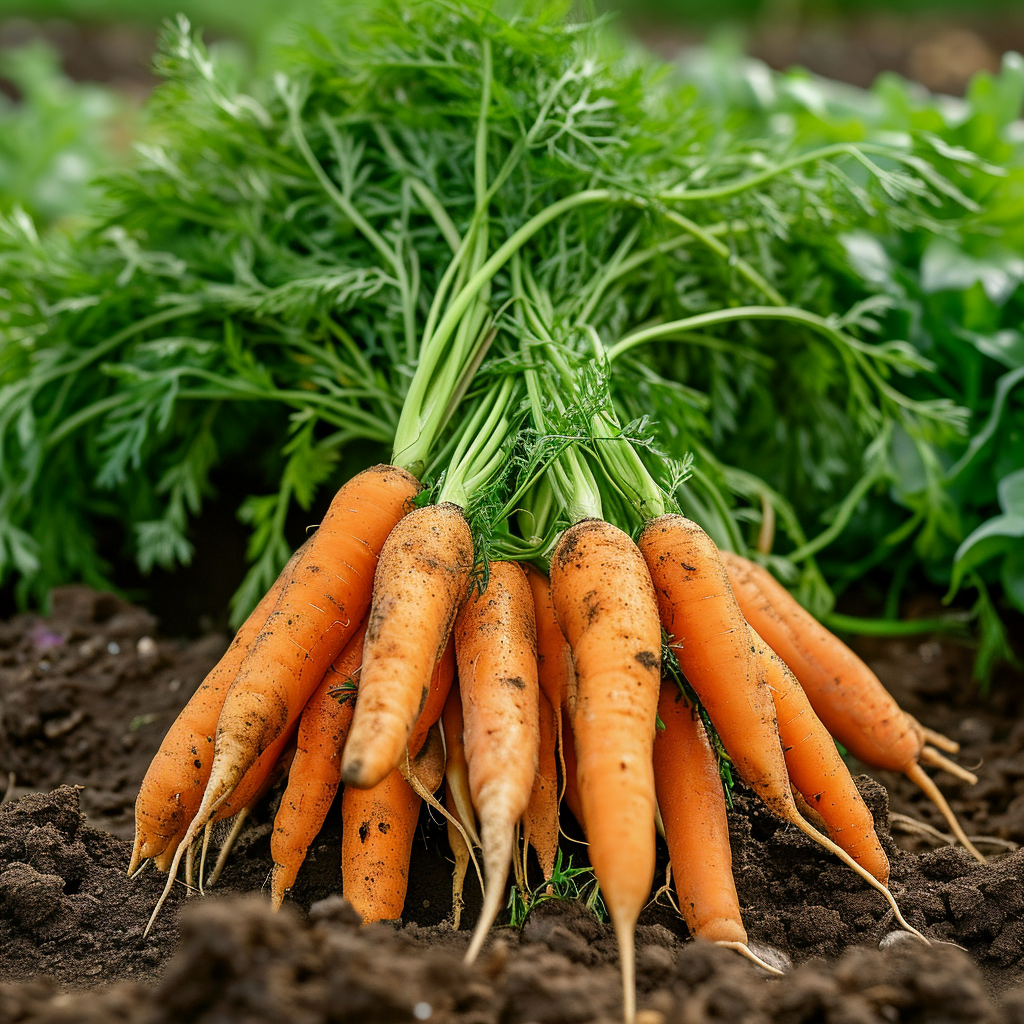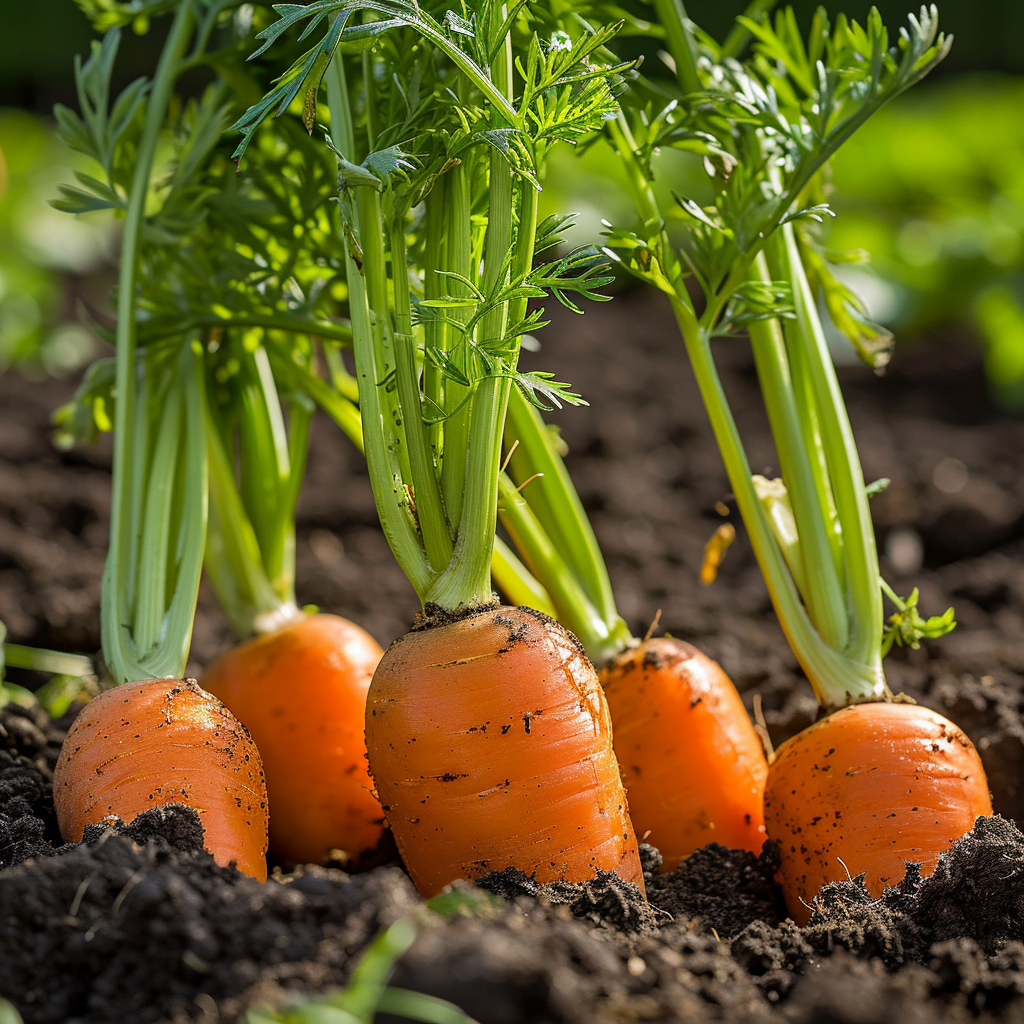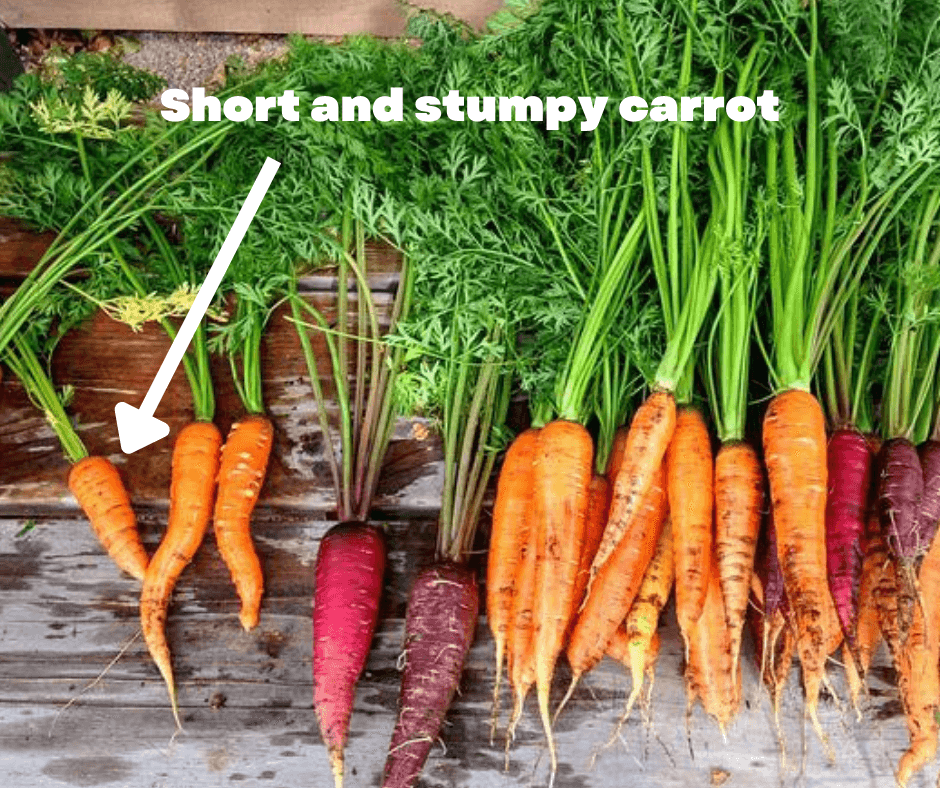So you’ve decided to grow some carrots in your backyard in Arkansas? Good choice! Carrots are a versatile and nutritious vegetable that can thrive in the Natural State’s climate. But before you grab your gardening gloves and start digging, it’s essential to know the best time to plant carrots in Arkansas. Luckily, we’ve got you covered! In this article, we’ll explore the optimal planting window for this delicious root veggie, ensuring you have a bountiful harvest of vibrant orange goodness. Let’s dig in!
Factors to Consider
When it comes to growing carrots in Arkansas, there are several factors that you need to take into consideration. These factors play a crucial role in determining the ideal time for planting and ensuring the success of your carrot crop. The key factors to consider include the climate, soil condition, frost dates, and rainfall patterns.
Climate
Understanding the climate of your region is essential for successful carrot cultivation. Carrots thrive in cooler temperatures and require a moderately long growing season. In Arkansas, the climate is classified as humid subtropical, with hot, humid summers and mild winters. The average temperature in the state ranges from 48°F in January to 79°F in July. This climate provides favorable conditions for growing carrots.
Soil Condition
Carrots prefer well-drained, loose soil that is rich in organic matter. Before planting, it is important to assess the condition of your soil. The soil should be free of rocks, clumps, and debris that can impede root growth. It should also have a pH level of around 6.0 to 7.0, which is slightly acidic to neutral. If your soil is heavy or clayey, consider amending it with organic matter such as compost or well-rotted manure to improve its structure.
Frost Dates
Knowing the average last frost date and average first frost date in your area is crucial for planning your carrot planting schedule. Carrots are a cool-season crop and can tolerate light frosts, but they are sensitive to freezing temperatures. Planting too early or too late can result in poor germination and stunted growth. By understanding the frost dates, you can ensure that your carrots have the best chance of thriving.
Rainfall Patterns
Carrots require consistent moisture throughout their growing season, but excessive rainfall can lead to poor root development and disease. It is important to be aware of the rainfall patterns in your area and make appropriate adjustments to irrigation to ensure your carrots receive the right amount of water. If your region experiences heavy rainfall, consider planting in raised beds or using mulch to improve drainage.

Ideal Time
When it comes to planting carrots in Arkansas, there are two optimal planting times to choose from: spring planting and fall planting. Each planting time has its advantages and considerations, so let’s explore them in detail.
Spring Planting
Spring planting is a popular choice for growing carrots in Arkansas. It allows the carrots to take advantage of the cool temperatures and longer days of spring, which are ideal for their growth. Here are some key factors to consider for spring planting:
Average Last Frost Date
To determine the ideal time for spring planting, it is crucial to know the average last frost date in your area. This date indicates when the risk of frost has passed and it is safe to plant tender crops like carrots. In Arkansas, the average last frost date ranges from late March to early April, depending on the region. Planting carrots a couple of weeks before this date ensures that they have enough time to mature before the onset of summer heat.
Soil Temperature
Soil temperature plays a vital role in carrot germination and growth. Carrot seeds require a soil temperature of around 50°F to sprout and establish roots. You can use a soil thermometer to determine the exact temperature of your soil. It is important to wait until the soil temperature reaches this threshold before planting your carrots to ensure successful germination.
Optimal Soil Conditions
Before planting your carrots in the spring, it is essential to prepare your soil properly. Carrots prefer loose, well-drained soil that is free of clumps and rocks. You can achieve this by tilling the soil to a depth of 8 to 10 inches and removing any debris. Adding organic matter such as compost or well-rotted manure helps improve soil structure and fertility, providing an ideal environment for carrot growth.
Recommended Varieties
When selecting carrot varieties for spring planting in Arkansas, consider those with a shorter maturity period to ensure a successful harvest before the hot summer temperatures arrive. Some recommended varieties for spring planting in Arkansas include Nantes, Danvers, Chantenay, and Bolero. These varieties are known for their excellent flavor, crisp texture, and ability to thrive in the state’s climate.

Average Last Frost Date
Determining the average last frost date in your area is crucial for planning your spring carrot planting. This date indicates the point when the risk of frost has passed, and it is safe to plant frost-sensitive crops like carrots. In Arkansas, the average last frost date varies depending on the region. Here are some common dates:
- Central Arkansas: Late March
- Northwest Arkansas: Early April
- Northeast Arkansas: Mid-April
- Southwest Arkansas: Late March
- Southeast Arkansas: Mid-April
By knowing the average last frost date specific to your region, you can time your carrot planting accordingly and avoid potential frost damage.
Soil Temperature
Soil temperature is a key factor to consider when determining the ideal time to plant carrots. Carrot seeds require a minimum soil temperature of around 50°F to germinate and establish roots. If the soil is too cold, the seeds may rot before they have a chance to sprout. It is essential to wait until the soil temperature reaches the appropriate range before sowing carrot seeds to ensure successful germination.
Optimal Soil Conditions
Creating optimal soil conditions is essential for the healthy growth of carrots. Here are the key factors to consider:
Texture
Carrots prefer a loose, sandy soil texture. This type of soil allows the roots to penetrate easily and promotes straight, uniform growth. If your soil is heavy or clayey, amending it with organic matter can improve its texture and provide a better environment for carrot growth.
Drainage
Proper drainage is crucial for carrot cultivation. Carrots do not tolerate waterlogged soil, as it can lead to root rot and poor growth. If your soil has poor drainage, consider planting carrots in raised beds or using a raised mound system to improve drainage and prevent waterlogged conditions.
pH Level
Carrots prefer a slightly acidic to neutral soil pH, ranging from 6.0 to 7.0. Conduct a soil test to determine the pH level of your soil. If the pH is too low (acidic), you can raise it by adding lime. If the pH is too high (alkaline), you can lower it by adding elemental sulfur or organic matter.
Well-Prepared Bed
Before planting carrots, it is important to prepare the bed properly. Remove any weeds or debris and loosen the soil to a depth of 8 to 10 inches. Incorporate organic matter such as compost or well-rotted manure to improve soil fertility and structure. Creating a well-prepared bed provides an optimal environment for carrot growth and development.

Recommended Varieties
When it comes to selecting carrot varieties for your garden in Arkansas, there are several excellent options to consider. Here are some recommended varieties:
Nantes
Nantes carrots are known for their cylindrical shape, crisp texture, and sweet flavor. They have a smooth skin and are easy to grow. Nantes varieties perform well in Arkansas’s climate and are suitable for both spring and fall planting.
Danvers
Danvers carrots are known for their tapered shape and rich orange color. They have a sweet, robust flavor and are versatile in the kitchen. Danvers varieties are well-adapted to Arkansas’s climate and can be grown successfully in both spring and fall.
Chantenay
Chantenay carrots are distinguished by their broad shoulders and conical shape. They have a sweet, crunchy texture and are excellent for juicing or roasting. Chantenay varieties are suitable for Arkansas’s climate and can be planted in both spring and fall.
Bolero
Bolero carrots are known for their uniform, cylindrical shape and excellent storage qualities. They have a crisp, sweet taste and are versatile in the kitchen. Bolero varieties perform well in Arkansas and can be planted in both spring and fall.
Fall Planting
Fall planting is another option for growing carrots in Arkansas. It offers several advantages and considerations compared to spring planting. Let’s take a closer look at fall planting for carrots.
Average First Frost Date
To determine the ideal time for fall planting, it is crucial to know the average first frost date in your area. This date indicates when the first frost is likely to occur in the fall. Carrots are a cool-season crop and can tolerate light frosts, but they are sensitive to freezing temperatures. To ensure a successful harvest, it is important to plant your fall carrots early enough so they have sufficient time to mature before the first frost arrives.
Soil Temperature
Similar to spring planting, soil temperature is an important consideration for fall planting. Carrot seeds require a soil temperature of around 50°F for successful germination. It is important to allow enough time for the soil to cool down after the hot summer months before sowing your fall carrot seeds.
Recommended Varieties
When selecting carrot varieties for fall planting in Arkansas, consider those with a longer maturity period. Fall planting allows for a longer growing season before the arrival of winter, giving the carrots more time to develop. The recommended varieties for fall planting in Arkansas are the same as those for spring planting: Nantes, Danvers, Chantenay, and Bolero.
Average First Frost Date
Determining the average first frost date is crucial for planning your fall carrot planting. This date indicates when the first frost is likely to occur in the fall and helps you time your planting to ensure a successful harvest. In Arkansas, the average first frost date varies depending on the region. Here are some common dates:
- Central Arkansas: Mid-November
- Northwest Arkansas: Late October
- Northeast Arkansas: Mid-November
- Southwest Arkansas: Late October
- Southeast Arkansas: Mid-November
By knowing the average first frost date specific to your region, you can plan your fall carrot planting accordingly to maximize their growth and yield.
Recommended Varieties
The recommended carrot varieties for fall planting in Arkansas are the same as those for spring planting. Nantes, Danvers, Chantenay, and Bolero are excellent choices that can thrive in the cool temperatures of the fall season. These varieties have the necessary characteristics to withstand the potential frost and produce high-quality carrots for your harvest.
In conclusion, the best time to plant carrots in Arkansas depends on several factors, including climate, soil condition, frost dates, and rainfall patterns. Spring planting and fall planting both offer ideal conditions for the successful growth of carrots. By considering these factors and selecting the appropriate varieties, you can enjoy a bountiful harvest of delicious carrots in Arkansas.



